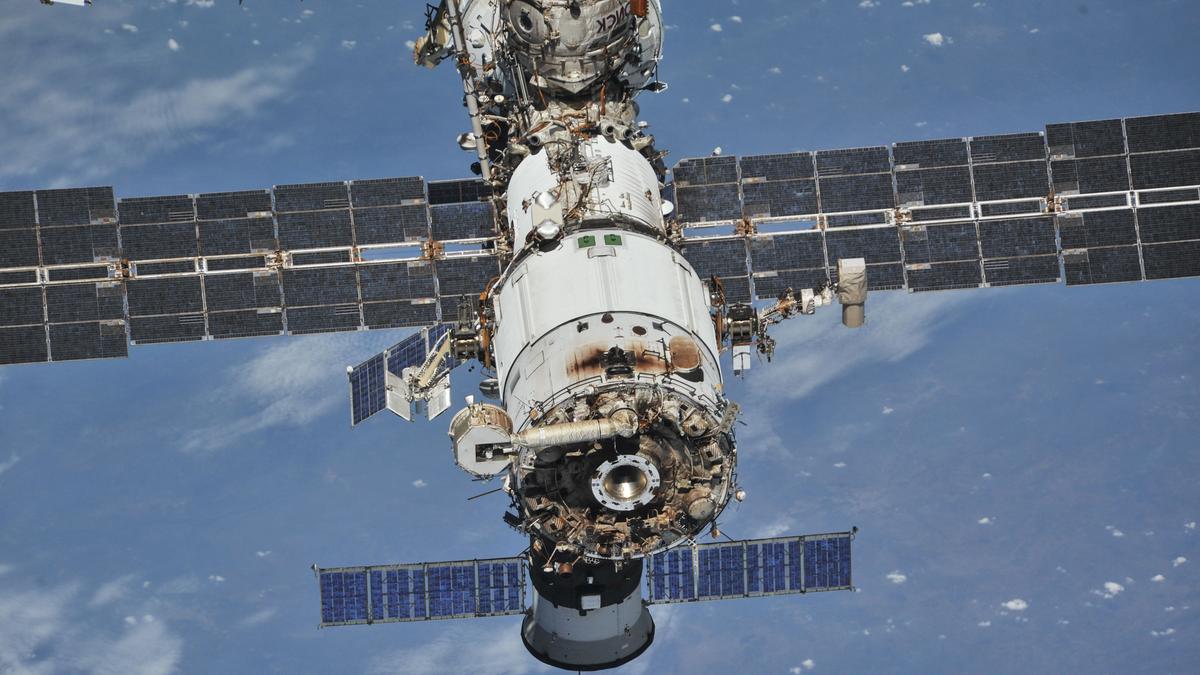International Space Station (image used for representation)
(This article forms a part of the Science for All newsletter that takes the jargon out of science and puts the fun in! Subscribe now!)
Wherever humans go, they need oxygen to breathe — and soon enough humans are going to go to new parts of space and stay there for longer. On long-term space missions like the International Space Station (ISS), the gas is stored in tanks carried from the earth or made by passing a large current through water, splitting it into hydrogen and oxygen.
In a study in Nature Chemistry on August 18, scientists from Germany, the UK, and the US have reported a way to use a certain kind of magnet to make this process, called electrolysis, a lot more efficient.
The electrolyser device has electrodes at two ends, one positively charged (anode) and the other negatively charged (cathode). Water is a poor conductor of electricity, so it’s mixed with a small amount of a substance that helps electrons pass through it. This substance is called the electrolyte and is usually some salt, acid or base.
The scientists wanted to check how magnetic fields influence water electrolysis in microgravity. To this end they conducted an experiment at the Centre of Applied Space Technology and Microgravity in Bremen, where there are facilities to simulate these conditions.
They studied two reactions: one that produced hydrogen using platinum electrodes and another that produced oxygen using iridium oxide electrodes, both in a liquid electrolyte solution. They compared how the reactions worked with and without microgravity and with and without a powerful neodymium magnet placed beneath the electrode. Neodymium magnets are strong, permanent magnets made of the rare earth metal along with iron and boron. The magnet was oriented to maximise its effect on the setup.
The main problem with electrolysis in microgravity is that a ‘lack’ of gravity causes gas bubbles to stick to electrodes instead of rising to the water’s surface and away from the electric apparatus. Thus operators resort to complicated, energy-intensive processes to remove these gases.
During their tests, the scientists found that for hydrogen production, the magnet’s presence increased the density of current through the electrolyte by 25% with microgravity conditions and 26% without. When they used platinum mesh electrodes in the electrolyser, the current density increased by around 240% in microgravity conditions. This meant the bubbles could detach and move away much faster.
The team reported similar results for the oxygen-producing reaction, although they were less pronounced. With the magnetic field, the current density in microgravity conditions increased by about 23%. Using a magnetic field during electrolysis also significantly slowed the rate at which electrical current passing through the electrolyte decreased over time.
“The demonstrators provide a proof-of-concept for the utilisation of magnetically induced flow control as a lightweight, energy-efficient and reliable phase-separation approach in electrolytic cells that pave the way for the development of next-generation electrolytic water-splitting devices for application in space environments,” the scientists wrote in their paper.
From the Science pages
Question Corner
Flora and fauna
Published – August 27, 2025 11:11 am IST
